I’m working on updating some past Decoded articles for a project that I’m working on…this one addresses the requirements for electric strikes installed on fire door assemblies.
This Decoded article was published in Door Security + Safety
.

Someone recently asked me why, after going to architectural school, I decided to become a hardware consultant instead of an architect. Right around graduation, I decided that I couldn’t become an architect because the process was way too subjective for me. I like right/wrong, black/white. I like math…you get an answer and it’s either correct or it’s not.
I think that has a lot to do with my interest in the codes. When someone asks me a code question I can usually go right to the applicable code book and interpret what is written there, and there’s always the Commentary or Handbook version to give a little extra insight. They’re not always black and white but we can work toward an understanding of the intent even if the code language isn’t perfect. The Authority Having Jurisdiction (AHJ) can sometimes be a bit of a wild card, but they are usually open to having a discussion and most of the time we end up on the same page.
I hate to respond to a question by saying, “Well, that’s a grey area…” In those cases I like to dig around until I can provide a solid interpretation with proof to go along with it. My interpretation isn’t official, but at least it’s something to refer to and discuss.
In my opinion, the issue of electric strikes on fire doors is NOT a grey area, but in researching the requirement for someone who needed some evidence, I discovered that the codes are not very specific about this topic. You need to put all of the pieces together to find something more than “because I said so.”
The question has come up several times in relation to electric strikes on stair doors. According to current codes, most stair doors have to allow reentry back into the building during a fire, therefore, fail safe electrified hardware must be used to lock stairwell doors. With a fail safe electric strike, cutting the power means that the spring-loaded keeper is the only mechanism holding the door closed, and that is not enough for the door to be considered positively latched. The pressure from a fire can push the latchbolt right through the keeper and the open door could allow smoke, heat, and gases to compromise the stairwell. I have had several people tell me that the pressure in the stairwell will keep the door latched, but not all stairwells are pressurized, and I have never seen a basis for that belief in the codes.
If a door is fire-rated, an electric strike must be fail secure to provide positive latching, and a fail secure electric strike will not provide for stairwell reentry. Electric strikes can not be used on stair doors to facilitate reentry because of the fire-rating requirements, but the fail safe / fail secure question is not specifically addressed in the code language. You have to look at all the evidence and come to a conclusion.
The International Building Code (IBC) clearly states: “Stairway exit doors shall not be locked from the side opposite the egress side, unless they are openable from the egress side and capable of being unlocked simultaneously without unlatching by any of the following methods.”
The IBC Commentary further clarifies the latching requirement by stating, “This provision further requires that the stairway doors be unlocked without unlatching. Stairway doors will typically be fire door assemblies, and their continued latching is necessary to maintain the integrity of the fire-resistive separation for the exit enclosure.“
Although the terms “fail safe” and “fail secure” are not specifically included in NFPA 80, Standard for Fire Doors and Other Opening Protectives, the standard does permit the use of electric strikes: “Electric strikes shall be permitted to be used in lieu of conventional strikes in single swinging doors and pairs of doors where provided for in the published listings.”
One important clue is that NFPA 80 requires components of fire door assemblies to be listed/labeled, and these Von Duprin fail secure strikes have UL labels for fire and burglary, while the fail safe strikes only have a UL label for burglary:
If you connect the dots, it seems obvious that a fail safe electric strike won’t meet the latching requirements, and a fail secure strike won’t meet the reentry requirements, so electric strikes can not be used on stairwell doors that require reentry. On other fire-rated doors that are not required to unlock upon power failure, a fail secure electric strike may be used.
If you have any insight to share, please leave a comment!
You need to login or register to bookmark/favorite this content.


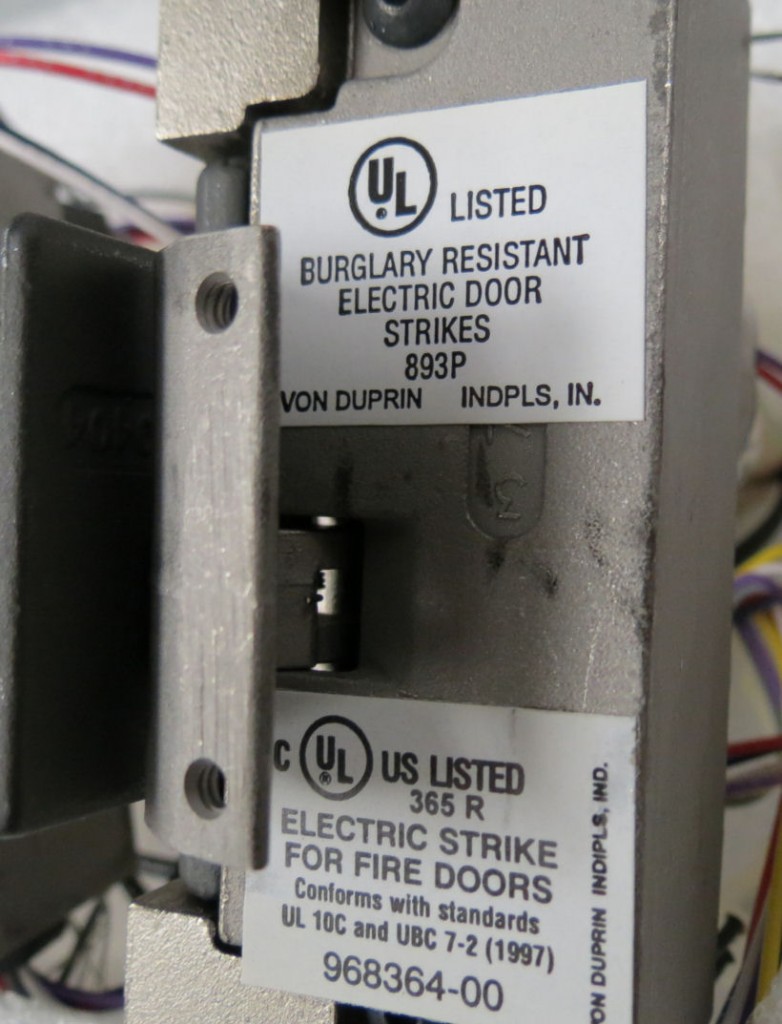
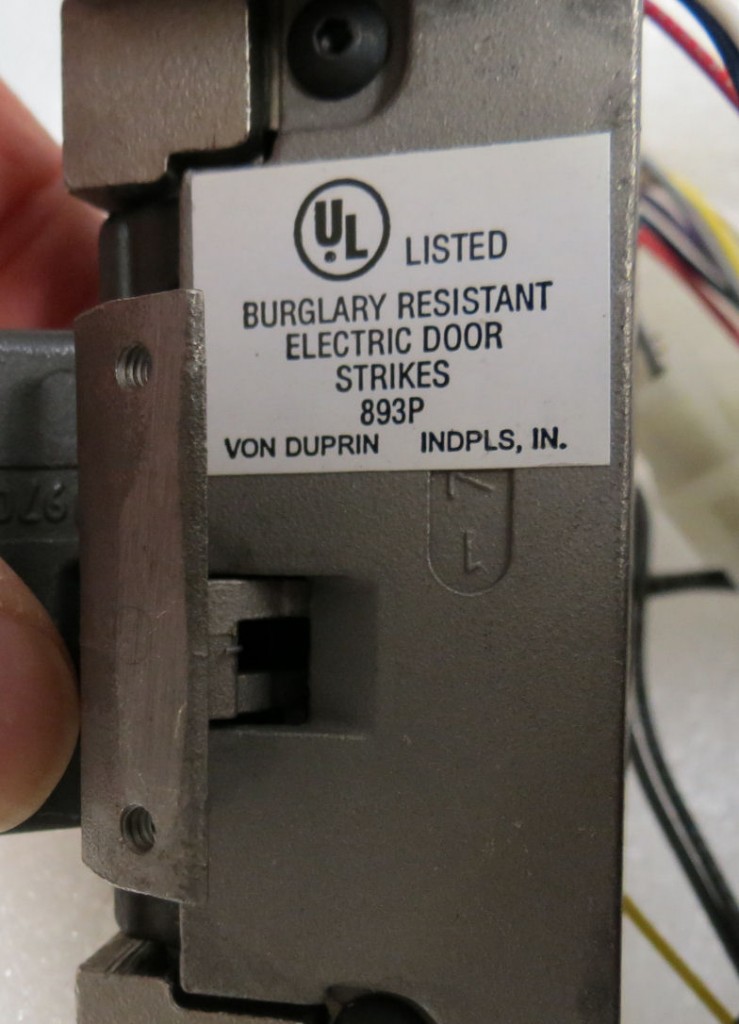

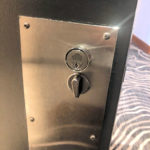

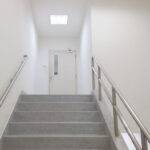


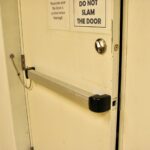
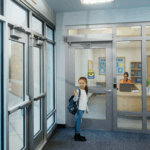
I would think that a fail secure electric strike with a fail safe electrified lockset would be legal.
When was re-entry from stairwells added to the code, was that around 2018? (Or am I thinking specifically about re-entry from a *roof* that must be allowed at all times? I’m sure that was a product of 2018 code)
I’m trying to recall the specific incident (something of a ghastly topic, I know) which was a major driver of the stairwell re-entry requirement. Wasn’t it a building in Chicago where firefighters directed people through one stairwell without realizing that the parties could become entrapped? I am searching to see what year that was, too.
Basically my thought is: how long of a grace period do existing structures with legacy installations (such as ones that may have electric strikes on their stairwell doors) have before they must modernize and be brought into compliance? Does it depend on case-by-case determinations by the AHJ or do whole cities choose when to “adopt” a revised code and then it becomes applicable across all buildings, new and old? Or is it a mish-mash of all these policies and even more, depending on the local authorities and local regulations?
Aaaah, i found it in my old NFPA class notes…
Friday October 17th, 2003
35-story Cook County Administration Building in Chicago’s Downtown Loop
A fire started on 12th floor and spread upward, with smoke, etc. People on higher floors were told to evacuate, then proceeded down one of the exit stairs only to encounter thick smoke, then firefighters on or near that floor told them to turn back and go back up the stairwell, but they couldn’t find a means back into the building on the floors they encountered.
The occupants who were looking to get to safety had to go all the way up to 27th floor before they could gain re-entry to the building proper, and six people very tragically didn’t make it. Others survived but were hospitalized.